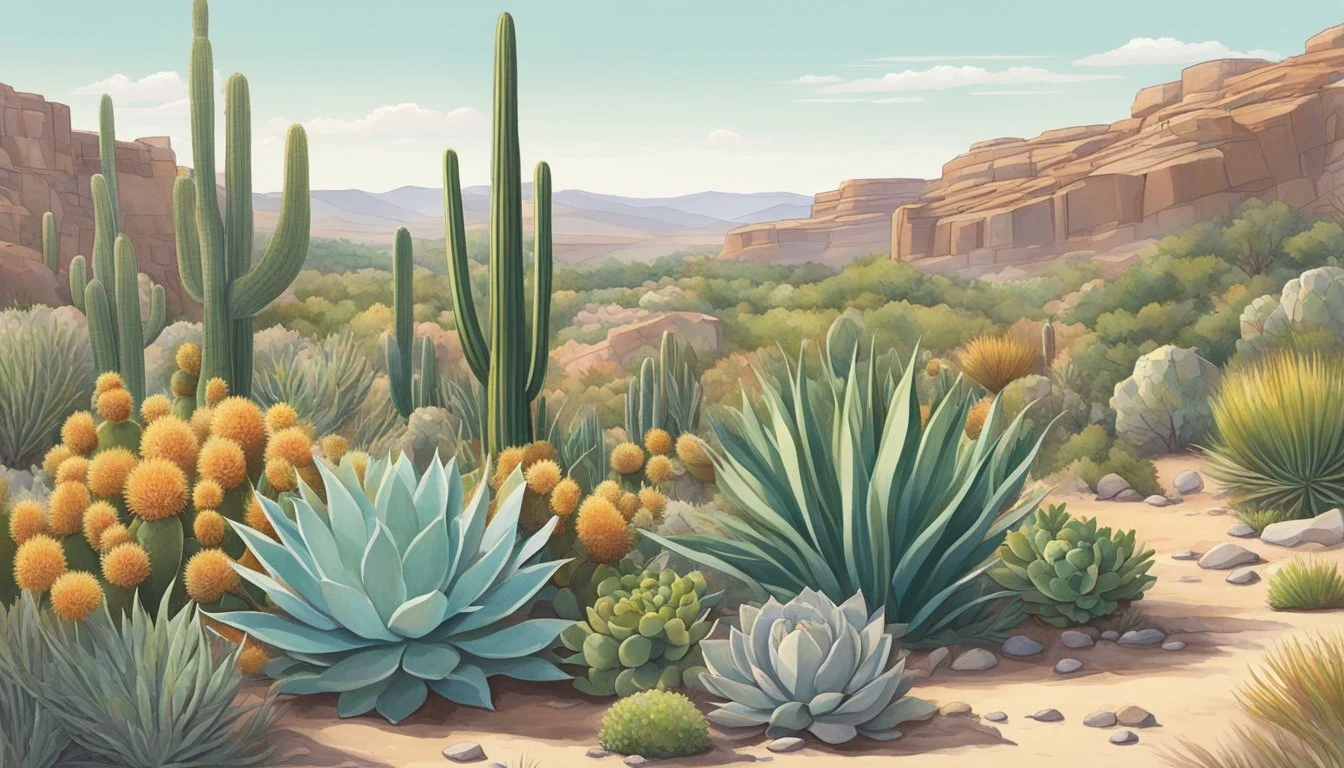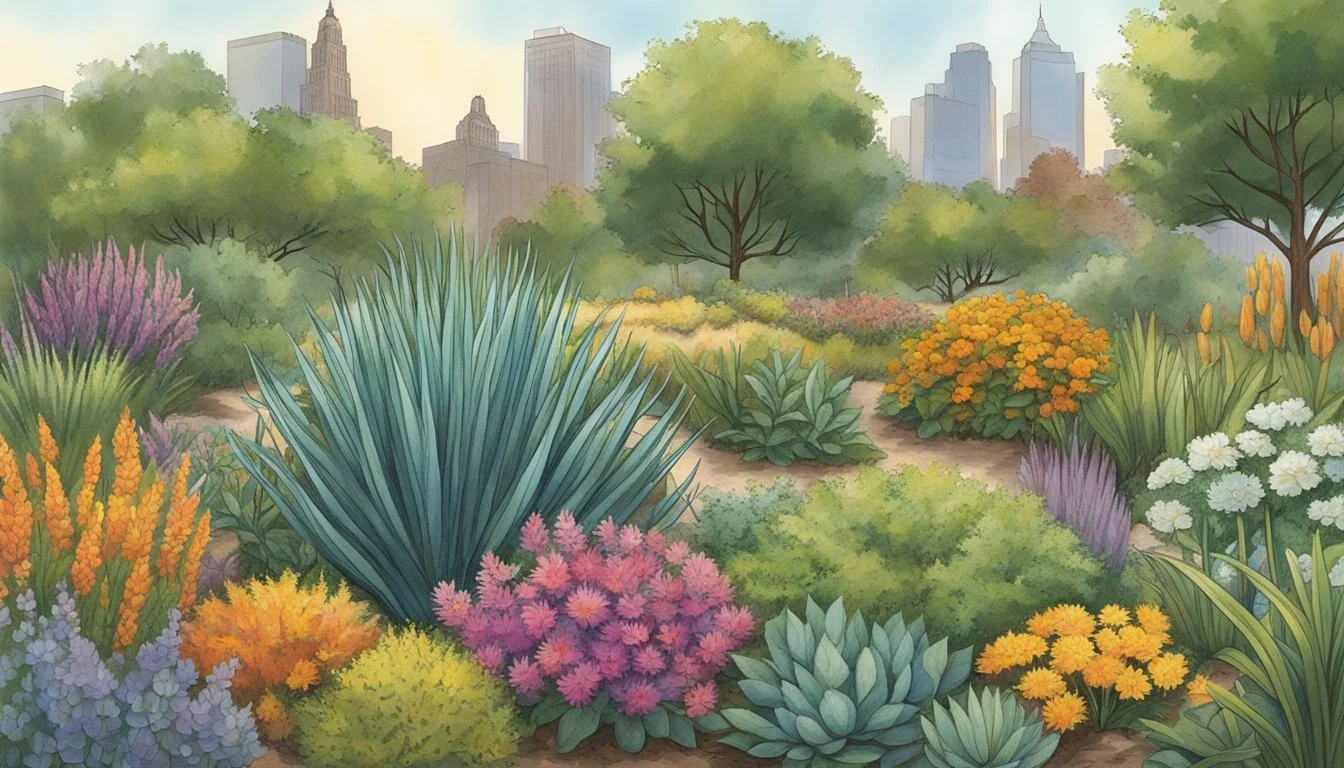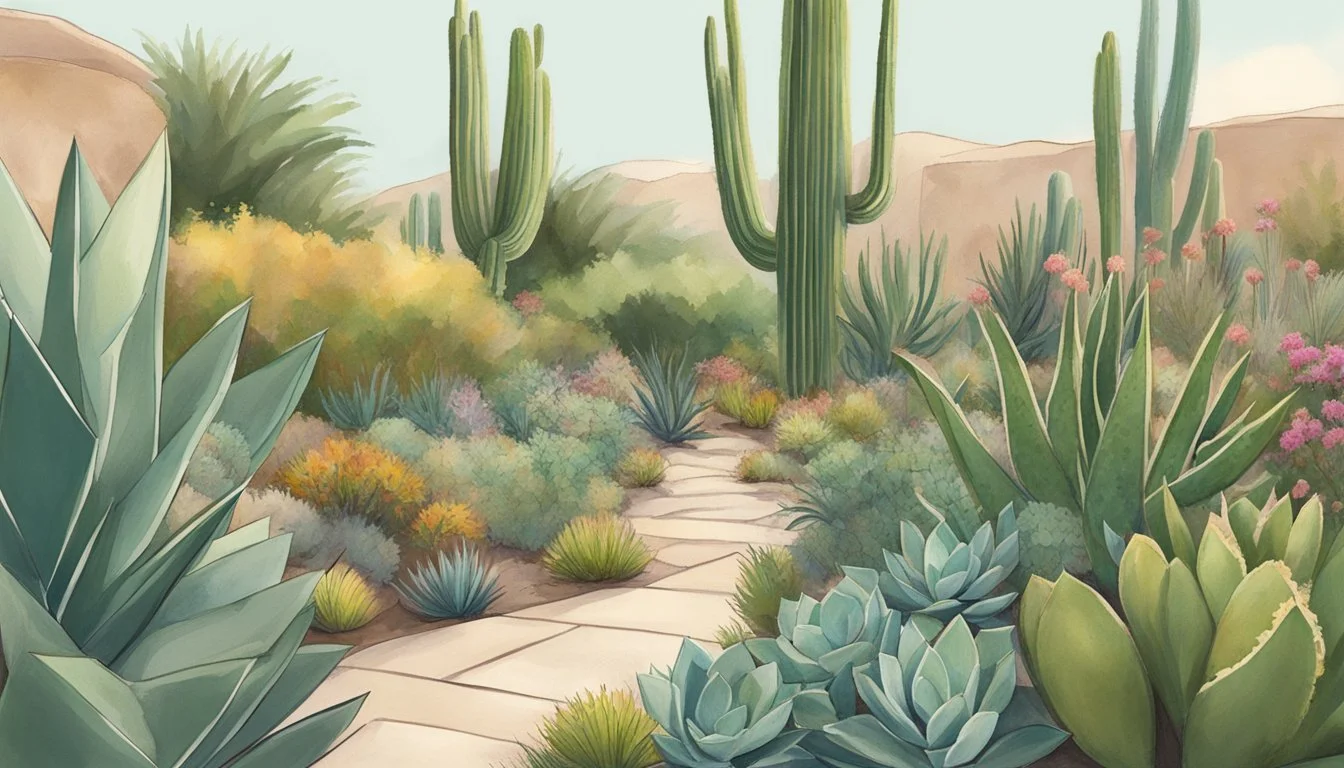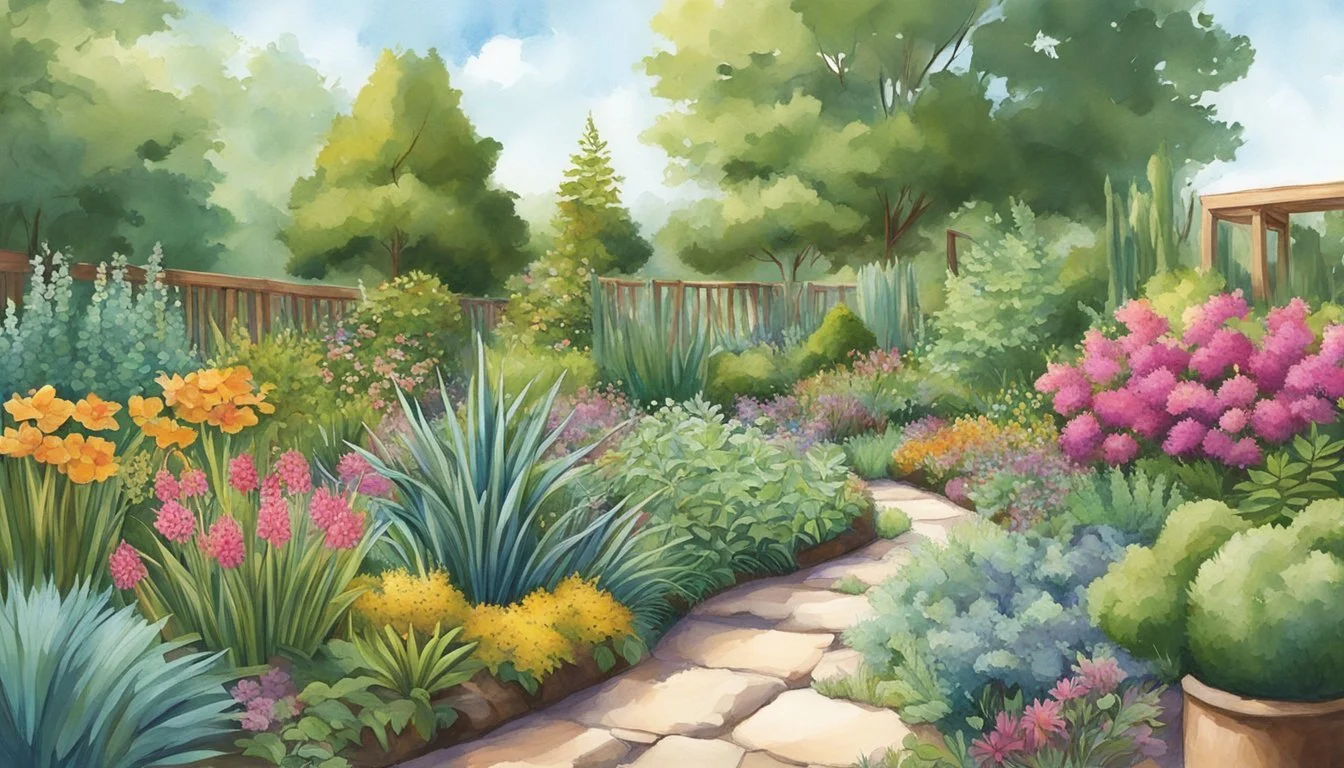Drought-Tolerant Plants in New York
A Guide to Resilient Gardening
In recent years, the interest in drought-tolerant plants has surged among gardeners and landscapers in New York. With fluctuations in weather patterns and growing concerns over water conservation, these resilient species offer a sustainable solution to maintain green spaces without the need for frequent irrigation. New York's climate, with its cold winters and varying summer conditions, presents unique challenges for gardeners, but a range of native and adaptive plants have proven to thrive in these conditions.
Drought-tolerant plants, often native to arid environments, have evolved to survive with minimal water, making them ideal for New York's sometimes harsh landscapes. Characteristics such as deep root systems, waxy or hairy leaves, and the ability to store water help these plants maintain their vitality during dry spells. Incorporating these hardy plants in New York gardens not only conserves water but also supports local ecosystems by providing habitat for native wildlife.
Landscapers and gardeners are increasingly turning to species like the versatile Bearberry, which is well-suited to New York's zones with its evergreen foliage and adaptability to full sun or part shade. Options for drought-tolerant shrubs tailored for the Northeast are readily available, ensuring there are varieties to complement any New York garden design. These plants, once established, offer a robust, low-maintenance alternative to traditional landscaping, perfect for modern environmental and aesthetic demands.
Understanding Drought-Tolerant Plants
In New York's varied climate, drought-tolerant plants are essential to sustainable urban landscaping, reducing water use, and thriving in full sun and well-drained soils.
Defining Drought Tolerance
Drought tolerance in plants refers to their ability to withstand dry conditions. Unlike other plants, these species thrive in environments where water is a restricting factor, often aided by specialized physical and physiological traits.
Benefits in Urban Landscaping
In the context of a bustling city like New York, using drought-tolerant plants in urban landscaping offers multiple benefits. These plants can significantly reduce water usage, withstand the urban heat island effect that increases evaporation, and provide greenery without the extensive maintenance other species might need.
Plant Adaptation Strategies
Drought-tolerant plants employ diverse strategies to adapt to arid conditions. Many develop deep root systems to tap into lower soil moisture, while others feature leaves with a waxy coating to minimize water loss. Further adaptations may include reduced leaf area and the ability to store water in their leaves or stems.
Soil Considerations for Drought Tolerance
Soil is a critical factor in the health of drought-tolerant plants. Well-drained soils, often amended with compost, organic matter, grit, or pea gravel, ensure that roots can access oxygen and water without being waterlogged. Additionally, the use of mulch can reduce surface evaporation and water-retaining polymers may be incorporated to improve moisture conservation.
Designing a Drought-Tolerant Garden
Creating a drought-tolerant garden in New York requires careful planning, an understanding of suitable plant species, and the integration of various non-plant elements to enhance sustainability. Here's how gardeners can achieve a balance between aesthetics and water conservation.
Planning and Layout
A well-thought-out plan is foundational to any successful drought-tolerant garden. One should map out areas that receive full sun and those with partial shade, as this will influence plant selection and placement. Introducing a rain garden— a shallow depression that collects rainwater—can maximize natural irrigation. Strategically placing drought-tolerant plants can create an efficient water-wise landscaping design, with taller plants providing shelter to those less tolerant of harsh sun. Using ground cover plants helps maintain soil moisture and reduce water evaporation.
Selecting the Right Plants
Selecting the appropriate drought-tolerant plants for New York gardens involves choosing species that thrive in regional conditions. Ideal selections may include native perennials like Salvia spp. for vibrant colors and Achillea spp. for intriguing textures. They should be able to prosper in full sun exposures and withstand occasional dry spells. Plants like Sedum (stonecrop) excel as a border choice, offering both beauty and resilience. It's essential to diversify the garden with a variety of species to ensure year-round aesthetic and ecological benefits.
Incorporating Non-Plant Elements
Adding non-plant elements such as pebbles, decorative stones, or boulders creates a visually appealing drought-tolerant garden with less reliance on water-intensive greenery. Including a pond can serve as a focal point while supporting local ecosystems. Proper mulch application is also critical, reducing surface water loss and adding an organic layer that gradually improves soil quality. One can employ landscaping features like terraces and pathways to guide foot traffic and prevent soil compaction, further promoting a healthy, resilient garden.
Essential Drought-Tolerant Plants for New York
Drought-tolerant plants are vital for sustainable gardening in New York. These species provide resilience against dry periods, making them essential for the local ecosystem.
Perennials and Grasses
Red Hot Poker: With its vibrant red blooms in the fall, the Red Hot Poker (Kniphofia) thrives in full sun and is a striking perennial that demands attention. Prairie Dropseed: This native grass forms clumps with fine-textured leaves, encouraging a landscape that's both resilient and attractive to wildlife.
Shrubs and Trees
Shrubs such as the Viburnum species are excellent for providing year-round interest with their spring flowers and fall berries. Bearberry (Arctostaphylos uva-ursi) is a low-growing shrub that excels as a ground cover with its leathery leaves and red berries.
For trees, consider the Serviceberry (Amelanchier), which can handle a variety of soil conditions while offering stunning fall color and edible fruit.
Herbs and Ground Covers
Lavender: Perfect for full sun and well-drained soils, lavender not only tolerates drought but provides a sensational aroma and pollinator support. Sedum: A diverse genus, sedum offers numerous drought-tolerant varieties for ground cover, presenting a carpet of color throughout the seasons.
Incorporating these plants into New York gardens aids in water conservation and supports native biodiversity.
Specialized Plant Groups
In New York, specialized plant groups such as drought-tolerant native plants and wildflowers play a significant role in conserving water and providing habitats for local wildlife.
Native Plants and Wildflowers
Native plants, including species like the hardy Asclepias also known as milkweed, Coneflower, and Swamp Milkweed, are well-adapted to New York's climate and soil conditions. These plants require less water once established, making them ideal for drought conditions. They also contribute to soil health and help prevent erosion. Lobelia siphilitica or great blue lobelia and Baptisia, commonly known as wild indigo, are examples of native wildflowers that add beauty to gardens while being low maintenance.
Asclepias (Milkweed): This plant is vital for monarch butterflies as it serves as the only host plant for their larvae.
Coneflower: Attracts various pollinators with its nectar-rich blooms.
Swamp Milkweed: Prefers moist environments but still maintains drought tolerance once established.
Plants Attracting Wildlife
Native plants like Goldenrod and Wild Bergamot are fantastic for attracting various types of wildlife. These plants offer essential food, nectar, and shelter. Goldenrod attracts an array of pollinators, while Wild Bergamot is a favorite for hummingbirds and beneficial insects.
Goldenrod: Supports a wide variety of pollinators including bees, butterflies, and other beneficial insects.
Wild Bergamot: Its vibrant flowers are particularly appealing to hummingbirds and butterflies, aiding in pollination.
These plants not only support a thriving ecosystem but also enhance the overall appeal and biodiversity of a garden in New York.
Plant Maintenance and Care
Proper maintenance of drought-tolerant plants involves specific techniques and practices. Adapting these methods to the needs of each plant type, while considering the local New York climate, ensures healthy growth and vibrant gardens year-round.
Watering Techniques
For drought-tolerant plants, efficient watering techniques are essential. They thrive with less water but require deep, infrequent watering to promote strong root development. Drip irrigation systems are recommended, as they deliver water directly to the base of the plant, reducing waste and minimizing leaf wetness that can lead to disease.
Mulching and Soil Health
Effective mulching helps conserve moisture and maintain well-drained soil conditions critical for drought-tolerant species. Apply 2-3 inches of mulch, such as bark chips or straw, around the base of the plants. Incorporating compost enhances soil texture and fertility, supporting robust plant health.
Pruning and Managing Growth
Regular pruning keeps plants healthy and prevents overgrowth, which can stress them and lead to increased water demand. Remove dead or diseased branches, trim to shape, and control the size. For flowering cultivars, pruning after blooming encourages new growth and flowers in the following season.
Fertilization and Plant Nutrition
While drought-tolerant plants are often low-maintenance, they do benefit from occasional fertilization. Apply a balanced, slow-release fertilizer in the growing season to provide essential nutrients. Avoid over-fertilizing, as it can lead to quick, lush growth that is less tolerant of dry conditions and more prone to weeds.
Seasonal Considerations
When cultivating drought-tolerant plants in New York, gardeners should adjust maintenance and care with the seasonal shifts to ensure plant health and vigor.
Spring and Summer Care
In spring, the focus for drought-tolerant plants like butterfly weed and sedum, is to establish a strong, deep root system. This is achieved by watering deeply but infrequently, encouraging the plants to search for moisture and strengthen their tolerance to dry conditions. As temperatures rise, it becomes crucial to monitor the soil moisture and adjust the watering schedule accordingly.
Regular maintenance during these warmer months includes the necessary removal of weeds which compete for resources. Applying a layer of mulch can aid in retaining soil moisture and suppressing weed growth. Gardeners should remain vigilant, ensuring that the mulch does not come in direct contact with the plants' stems to prevent rot.
Fall and Winter Preparations
As fall approaches, preparations should be made for the colder months to come. In early fall, gardeners may need to increase watering slightly to help plants store moisture for the winter. However, care should be taken not to overwater, as this can lead to root issues.
Once the plants have entered dormancy, it's generally safe to reduce maintenance efforts. While mulching in winter can provide an insulative layer against freezing temperatures, it should be applied carefully to not smother the plants. Monitoring for and removing any fallen leaves or debris also helps prevent the development of fungal diseases during the damp, cooler months.
Landscape Design with Drought-Tolerant Plants
Drought-tolerant plants offer a resilient and attractive solution for New York landscapes, ensuring gardens thrive despite variable weather conditions. Focusing on variety in color and texture, and strategically creating focal points, can significantly enhance visual interest in gardens that require minimal water.
Color and Texture in Design
Incorporating a diverse palette of colors and varied textures is essential in designing with drought-tolerant plants. Foliage, rather than flowers, often becomes the star, providing a backdrop of greens, grays, and even blues. For example, silvery foliage, which is common among many drought-resistant species, can brighten shady areas and add contrast. When selecting ground cover, landscape designers might opt for creeping thyme with its small purple flowers and aromatic leaves, or blue fescue grass for its fine, bluish tufts.
Landscaping with these plants goes beyond mere aesthetics; textured leaves can also serve practical purposes. They often reflect sunlight and conserve water, making them well-suited for full sun placements. Similarly, broader leaves can act as natural mulch, shading the ground and reducing water evaporation.
Creating Focal Points
Strategic placement of drought-tolerant plants can create compelling focal points in a garden. The design might incorporate a sculptural agave or a dramatic clump of pampas grass as a central feature. Borders also play a crucial role; they delineate spaces within the garden while contributing to the overall composition. A border of Russian sage, with its spiky purple inflorescence, can draw the eye along garden paths.
For a year-round focal point, evergreen shrubs that retain their leaves throughout the seasons provide structure and consistency. Drought-tolerant plants with distinctive shapes or bold textures, such as yucca or sedum, are excellent for these purposes. They not only stand out in the landscape but are also robust against the climatic challenges of New York's varied seasons.
Problem-Solving with Drought-Tolerant Species
Drought-tolerant species play a crucial role in ecological resilience, particularly in urban areas like New York. They provide solutions to soil erosion and pest control, contributing to a sustainable environment.
Controlling Erosion
Drought-tolerant plants, with their deep and extensive root systems, offer an effective defense against soil erosion. Species like gray goldenrod (Solidago nemoralis) and various ground cover plants establish a living network that secures soil, even during dry spells. For example, the native butterfly weed (Asclepias tuberosa) not only stabilizes soil but also supports pollinators, serving dual ecological functions.
Minimizing Pests and Diseases
By incorporating drought-tolerant plants, the landscape has a natural resistance to certain pests and diseases. Vegetation that is well-adapted to the local climate is less susceptible to ailments that often afflict other plant species. Through strategic plant selection, challenges with deer and invasive weeds are curtailed, as native, robust plants like the butterfly weed offer minimal attraction to deer and compete effectively against aggressive weed species. This selective presence reduces the reliance on chemical treatments, making it a safer choice for the local fauna and flora.
Ecological Benefits of Drought-Resistant Flora
Drought-resistant plants provide crucial ecological benefits in New York, from enhancing biodiversity to reducing water consumption. They serve as a resilient foundation in local landscapes, supporting various forms of wildlife.
Supporting Local Ecosystems
Birds and butterflies that are native to New York often rely on drought-resistant flora for their habitat. These plants offer essential resources, such as nectar and seeds, which are especially critical during dry periods when other food sources may be scarce. Additionally, these plants tend to be native species, which have evolved alongside local wildlife, fostering a balanced ecosystem.
Pollinators: Native drought-resistant plants are vital for pollinators, providing them with a consistent source of nourishment.
Wildlife: These plants can serve as shelter and food for various wildlife species, enhancing the local biodiversity even during times of drought.
Conservation and Sustainability
Adopting drought-resistant plants in landscaping is a sustainable practice that can lead to significant water conservation. These plants have adapted to thrive with minimal watering, which not only conserves a precious resource but also reduces the need for human intervention in garden maintenance.
Watering needs: They require significantly less water, decreasing the reliance on irrigation systems.
Evaporation: These plants are often effective in reducing soil erosion and water evaporation, preserving the soil's quality and moisture.
By incorporating drought-tolerant species into local landscapes, New Yorkers can create more sustainable and ecologically beneficial environments.
Additional Resources and References
For gardeners interested in introducing drought-tolerant species into their New York landscapes, several resources stand out for their comprehensive information.
NYC Parks Greenbelt Native Plant Center provides an extensive list of Drought-Tolerant Species that are well-suited to the region’s climate and soil conditions. They detail a variety of trees that can withstand dry conditions, including:
Acer spp. (Maple species)
Betula populifolia (Gray birch)
Carya spp. (Hickory species)
Celtis occidentalis (Hackberry)
The New York Botanical Garden offers a dedicated guide for drought-tolerant plants. This resource showcases garden features and bloom times, enriching the gardener's planning process.
Those focused on sustainable gardening principles may find the guide on Drought-Tolerant Plants for the Conscientious Gardener especially useful. It introduces a variety of robust plants such as Baptisia 'Purple Smoke' and highlights their aesthetic and ecological benefits.
Lastly, for a specific emphasis on native plants, Epic Gardening shares insights on 21 native plants for New York gardens. The list is tailored to those who aim to support local ecosystems and includes plants like:
Arctostaphylos uva-ursi (Bearberry)
A focus on selecting appropriate species will result in a garden that not only saves water but also thrives in New York's unique climate.
Conclusion
Selecting drought-tolerant species is a practical approach for sustainable landscaping in urban areas like New York. These species offer the resilience required to thrive in environments with periodic water scarcity. The Greenbelt Native Plant Center recommends various drought-tolerant plants which adapt well to New York's climate by enduring dry spells effectively.
Residents and city planners can employ these plants to cultivate green spaces that are both aesthetically pleasing and environmentally conscious. Implementing drought-resistant flora contributes to the ecological health of the urban landscape, providing habitat for wildlife and reducing the need for water consumption.
Native species such as the American Elm have demonstrated an exceptional tolerance to arid conditions and urban stressors. By integrating these varieties into city planning, New York can maintain its green infrastructure and support local ecosystems in the face of climate challenges.
It is evident that with proper selection and maintenance, drought-tolerant plants offer a viable solution to enhance urban biodiversity and resilience. They underscore the possibility of harmonizing city life with nature's innate capacity for adaptation.
Frequently Asked Questions
Drought-tolerant plants offer New York gardeners robust alternatives to traditional plants. They often require less water and maintenance while adapting well to the local climate.
What are some low-maintenance drought-tolerant plants suitable for New York gardens?
In New York gardens, plants such as lavender and culinary sage are excellent low-maintenance options known for their drought tolerance.
Which drought-tolerant plants can thrive in containers in New York?
For container gardening, Butterfly Weed, with its deep taproot system, is especially adept at surviving dry conditions.
What are the top drought-tolerant plants recommended for New York landscapes?
New York landscapes benefit from the resilience of native species like Eastern Red cedar and various maple species that are accustomed to the region's climate.
Which plant varieties are known for exceptional drought resistance?
Exceptional drought resistance can be found in plants with deep tap roots such as prairie plants and certain native wildflowers and grasses specific to the New York area.
What are some outdoor plants that require minimal watering to survive in New York?
Outdoor plants like yarrow require minimal watering and are well-suited to New York's sometimes challenging weather, thanks to their inherent drought resistance.
What are the ideal drought-tolerant plants that require little to no watering for a New York climate?
Ideal plants for the New York climate with minimal watering needs include native species such as the Red maple and Silver maple, which are adapted to thrive in local conditions with little care.













